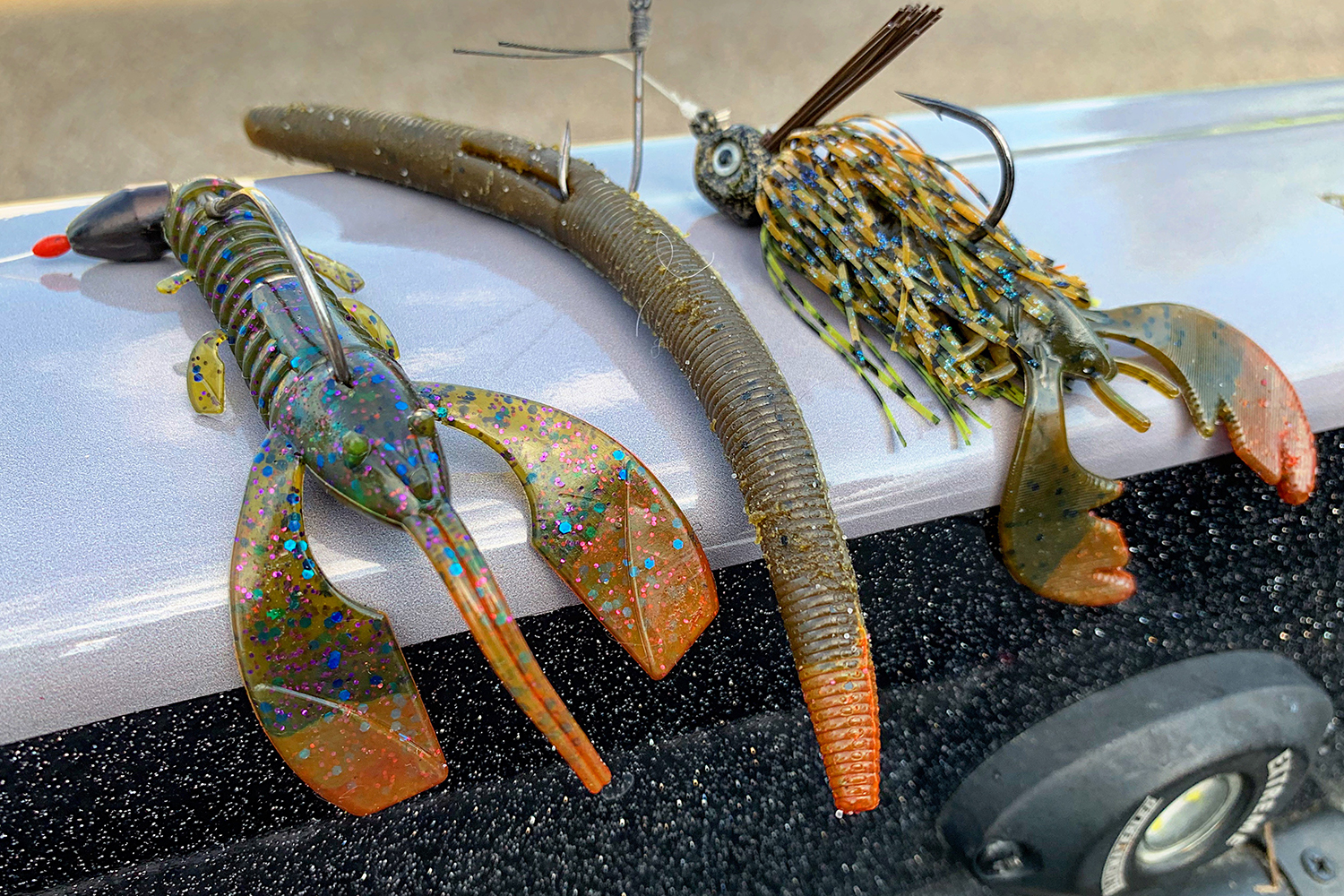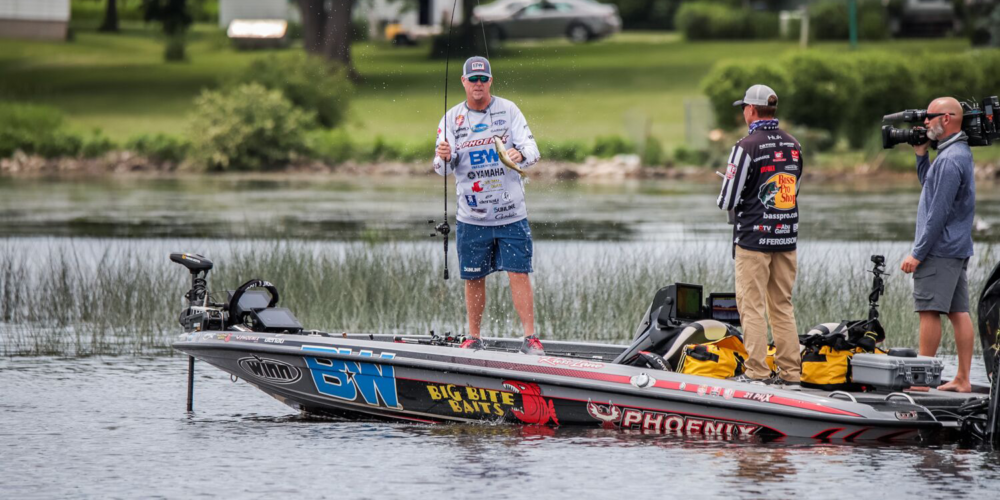Taking A Dip Into Bait Dyes with Russ Lane

Russ Lane was able to come away with a 28th-place finish in Stage Eight in Neenah, Wisconsin thanks to a basic technique with a tiny added detail: Lane dyed the tips of his green pumpkin-colored Big Bite Baits soft plastics orange.
The Alabama pro made the decision to dip-dye his baits during his practice round on Lake Winnebago.
“I used orange to look more like the crawfish that the bass were feeding on in Wisconsin,” Lane explained. “The first two fish I caught in practice had big, bright, orange claws sticking out of their throat. That’s how I knew that these bass were feeding on crawfish, and what dye color I needed to use. It was crazy how much of a difference it made in terms of the number of bites I was getting.”
Deciphering the Dye

The orange “flair” went against Lane’s normal approach for the time of year, which is to usually use a different color in the later parts of the year.
“I normally go with chartreuse-colored dyes on my baits when we get to the spawn and post-spawn period,” Lane said. “That color looks like bream to the bass, and that’s what they like to eat at that time of the year usually.”
But once Lane saw those bright orange pinchers poking out of his Wisconsin largemouth’s throat, he knew he had to make the change in color. Rules are made to be broken, and Lane says that it’s all about noticing any changes in the water around you.
“You have to be aware of what’s going on around you when you’re using dyes,” Lane warned. “It’s all about noticing what’s unique to the body of water you’re fishing.”
Different Colors to Choose From

Chartreuse and orange are great standby colors for bait dyes, but they’re not the end-all-be-all. Lane says that he has used a sapphire blue dye to imitate crawfish as well. If you can figure out what color phase crawfish are in your fisheries, mimicking those colors can make a big difference.
It’s also not just about copying the crawfish. Lane has even resorted to dying his baits the color of a fish he had never even seen before.
“I fished a tournament a couple of years ago on Mille Lacs Lake in Minnesota and the main bait fish there was something called a cisco,” Lane said. “I had never been on a lake where that was the main baitfish, so I had to look up what it looked like. I dyed all my swimbaits the color of cisco and it helped me finish in the top five. It gave me more confidence about using dyes.”
The Scent of Victory
Dyes are a great tool to use, but sometimes they can use a little boost, too. When Lane is fishing in the early spring and fall, he adds scents to his baits to compliment his dyes.
“If you’re fishing for bass and the water temperature is in the 60s, the fish have a tendency to just look at your bait and not attack it,” Lane said. “A crawfish or a bream scent is the best to use, and there are plenty out there in the marketplace. Along with dye, I always use scents when the water temperature is low like that. It just helps give those fish an extra nudge to try and attack that bait.”